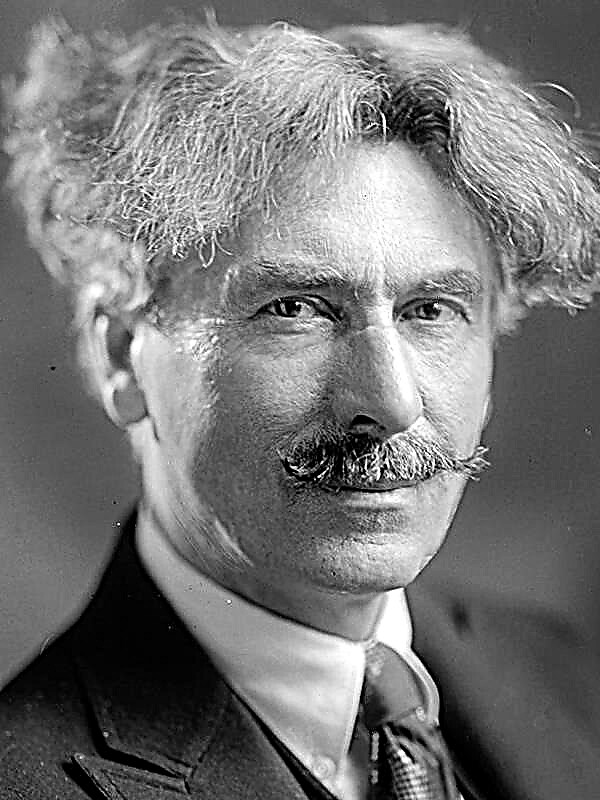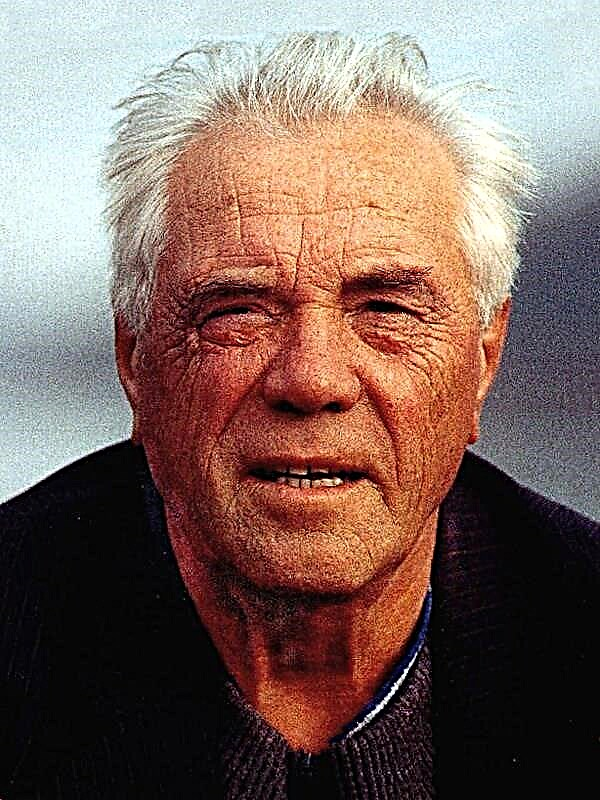You are also part of the tribe, regardless of your desire.
We feel the need to belong to a team. Each of us is a member of at least one tribe: as an employee of a company, a member of a religious community, or a fan of a musical group.
A tribe has three components: a group of people, a general idea, and at least one leader who represents and organizes it.
Example. Most Wikipedia articles are composed of a group of 5,000 authors and editors. They work together, embodying the idea of Wikipedia co-founder Jimmy Wales about accessible, collaborative information. But most importantly - the presence on Wikipedia of a common cause, forcing members of this tribe to accept the values and ideas of the tribe as their own. So they turn from ordinary followers into motivated supporters.
The ideas of the tribes are diverse: from environmental justice to a political campaign or a group of fans of Apple products.
Tribes have always existed, but if before they were localized, now, with the advent of the Internet, territorial boundaries are erased. Thanks to social networks, the influence of a tribe does not depend on its size, but on what idea it advocates and how it applies communication technologies.
The steady growth of the tribe's influence is based on people who love their job, promote their values and attract attention in any way.
Make the idea exclusive and meaningful for a specific group of people
In the past, the primary goal of marketing was to introduce as many people as possible to your products. But times have changed. Many companies still create products for the masses, but such a strategy could ruin the firm.
Example. Nokia was the leading mobile company in the world. With the advent of smartphones, they missed a chance and still have not regained their former positions. But before the rapid development of the smartphone market, no company had a technological advantage (even Apple). So what did Nokia do wrong? They worked on creating the cheapest mobile phones that everyone would like. The problem with a product that will please everyone is that this is usually how mediocre goods are born, which they will use, but will not love. Apple worked on a new type of phone that would appeal to a limited number of consumers. And if a person loves something, he will tell his friends about it. So quickly a new tribe was born. And Apple won by creating an outstanding product, because tribes are not formed on the basis of mediocre ideas.
Today people are not satisfied with typical ideas. A powerful idea should have a personal, exclusive and meaningful color. It should “cut the eye” with novelty and allow people to participate in its development. That is, a convincing idea satisfies a desire that has not been fully satisfied before.
Thanks to modern technology, everyone can form and lead a tribe
With popular YouTube videos or ideas from influential bloggers, getting people's attention is easier, cheaper, and more effective than ever. And you too can form a new tribe. How to do this?
People should actively communicate, developing the general idea not only vertically (between the leader and the participants), but horizontally - between the members of the tribe. Modern technology facilitates both vertical and horizontal communication. Websites, blogs, and social networks allow you to spread ideas by providing space and tools for creating a tribe, communicating in it, and sharing ideas. In particular, you can use Basecamp to organize projects and Twitter to share current information about events.These services will establish the basic rules for participation and the specific goals of the tribe.
Example. CrossFit.com is a website where fitness fans can share their fitness programs, knowledge, etc. CrossFit certification courses are sold months in the U.S. and more trainers are opening their gyms to support the growing demand of the tribe. All activities are coordinated through one website. All of this is due to Greg Glassman, known as Coach. He understood how to lead a tribe by telling his fitness stories and letting people communicate through him.
If you have a meaningful idea and a will to lead, people will follow you
For the continuous development of the tribe, about 1000 true believers are needed. But how to attract so many people?
Use what people already want. To create a tribe is to turn an existing desire into a way that tribe members can connect with each other and form a tribe under your leadership.
According to former US Senator Bill Bradley, the tribe contains three components:
- A story about the future you are trying to build.
- The connection between the leader and the tribe, as well as between members of the tribe.
- Action - the less restrictions, the better.
Often, leaders do not understand that money does not play a role here. Your idea needs a meaningful story about what will be worth the talk. Many organizations offer only something to do - and there’s nothing to talk about.
What needs to be done to create a tribe?
Example. The idea of a global warming documentary, The Inconvenient Truth, by Al Gore quickly turned into an international movement. But the author did not say anything new: the problem of climate change has been known for over 30 years. Why did his idea find such an echo? Because you needed a leader who was able to organize people into a community that already knew what to do. Al Gore shared the film for free with thousands of people, because he believed in him and knew that, having the opportunity, people would join him. So he became the leader of the tribe.
Tell the story to people who want to hear it. Help them unite in a tribe. Take the lead. And change the world!
Don't worry about tribal growth, but focus on building ties
It seems that the larger the tribe, the better. But this is a mistake. At least in the beginning, the main advantage of the tribe is not size, but the many connections between members, the leader and the outside world.
The tribe has four directions of communication:
- The leader is a tribe.
- The tribe is the leader.
- A member of a tribe is a member of a tribe.
- A member of the tribe is an outsider.
In ordinary marketing, there is only one direction - the consumer company.
The most important area is communication between members of the tribe. Cohesion plays a critical role, that is, rapprochement of participants by facilitating communication and strengthening common ties. This can be done by converting common interests into one goal, and providing a platform for easy communication.
You can use the power of insiders and outsiders. To create a sense of unity, develop an insider culture that inevitably excludes outsiders. This allows you to distinguish yourself from other tribes and create a sense of inner identification.
Example. Obsessed with secrecy, Steve Jobs passively created a bunch of sites where Apple fans exchanged rumors and speculations about the company's new products. The sites rallied fans and raised the level of interest in new products higher than that of any other company.
Remember, the main task of the leader is to organize and strengthen your tribe. But what else does the leader need?
Leadership means getting into a vacuum and creating movement
Leadership implies a change - to go where no one has been before: in a vacuum.
To create a tribe you need a visible change. The need for change arises from the discomfort of feeling that something is missing in the world. The leader enters directly into the zone of discomfort (vacuum) and makes people follow him.Despite the risks, leaders do this with faith in the idea and knowing that the sooner innovations happen, the more effective they are.
Do not think that this fate is only within the power of famous and charismatic people. You yourself can become a leader! Leaders, first of all, are noble, and therefore are considered charismatic.
Get rid of misconceptions. Many believe that it is necessary to be famous or exude charm in order to become a leader. But we (members of the tribe) quickly determine whether a person’s motivation is genuine and disinterested, or whether he is simply a narcissistic egoist.
True leaders give more than they demand. That's why Al Gore made his film free, and Shepard Fairy (Obama's famous poster artist) shares his concept for free. These people believe in the value of their work and make others believe in it, and for this they are rewarded. The film by Al Gore was seen by hundreds of people around the world, and the value of Shepard Fairy's work has skyrocketed since the 2008 US presidential election.
To make the world a better place, we need to swim upstream more often
Leadership can be truly rewarded. So why don't everyone do this?
Too many people are susceptible to herd feelings. Schools and society make us obedient, afraid of change. We are taught not to raise our heads and not climb into other people's affairs, turning into a herd of "sheep." We are well-educated people, as well as "obedient sheep."
It is necessary to swim against the tide more often: to question the status quo and existing dogmas, to act without asking permission. Organizations need such people to propagate changes from within: having received a certain freedom, they will be capable of incredible things! They can lead tribes, invading new territories and helping to change the world.
There are few such people, because the media “feeds” us with tales of imminent bankruptcy and self-deception so that no one dares to challenge the status quo.
Dissuade yourself: everything is risky, and the world needs the changes you are trying to make.
Fear makes it difficult to translate ideas into reality and change the status quo. But with modern technology, you no longer have excuses: you no longer need power or money. So raise your head and become the leader of your own tribe!
The most important thing
Around us there are tribes eager to find their leader. Thanks to the Internet, anyone can become the leader of a tribe that we desperately need to lead them to a brighter future.
- If something bothers you, feel free to act. When you are concerned about something, write a manifesto about the better future that you expect. Then publish the message on the Internet and share it with as many people as possible. Swim against the tide.
- Rally your tribe. Do not care about the size of the tribe, but about unity. Provide people with a platform for easy communication. Continually maintain both vertical and horizontal communication. Remember the strength of insiders and outsiders - tribal members must distinguish themselves from other tribes.












